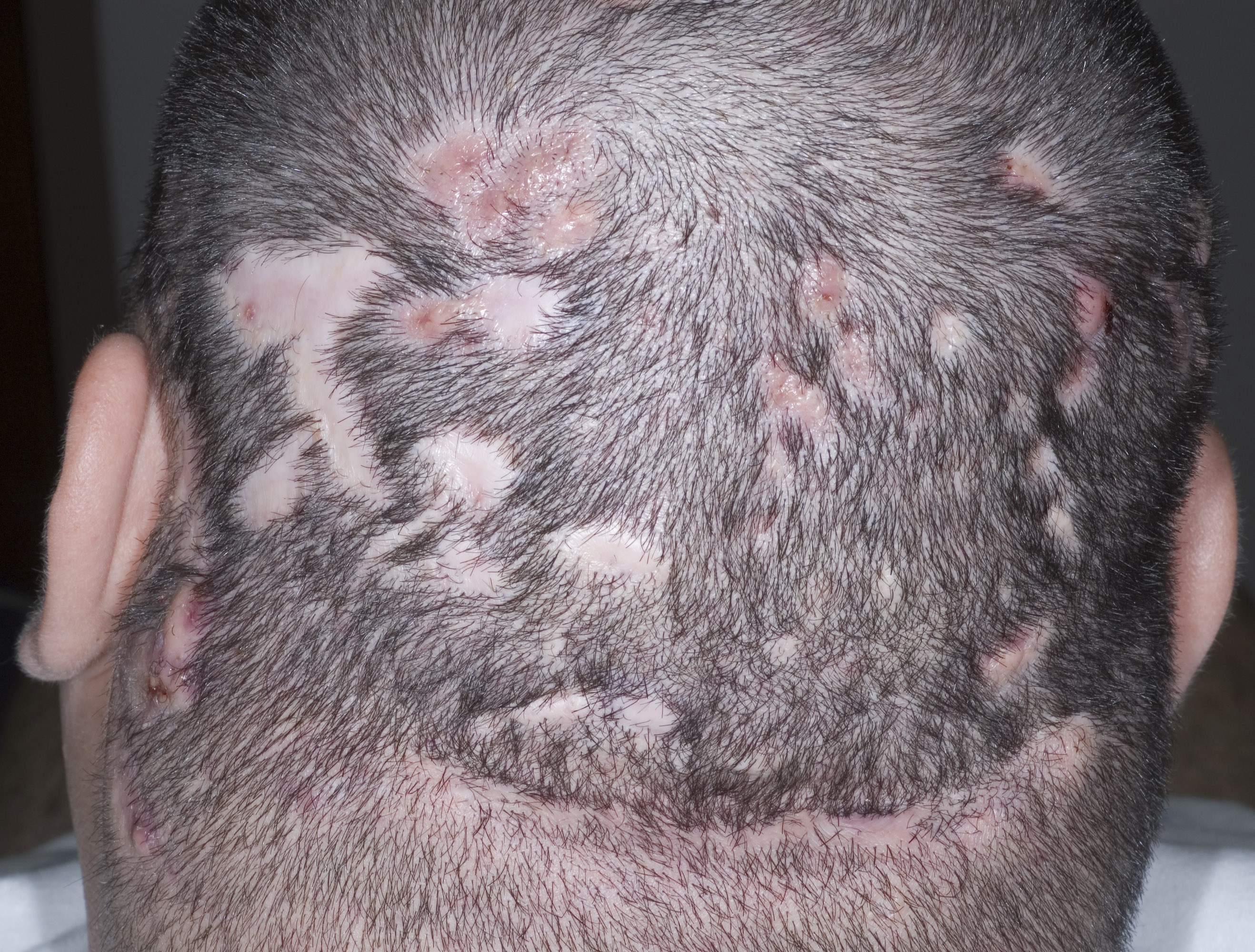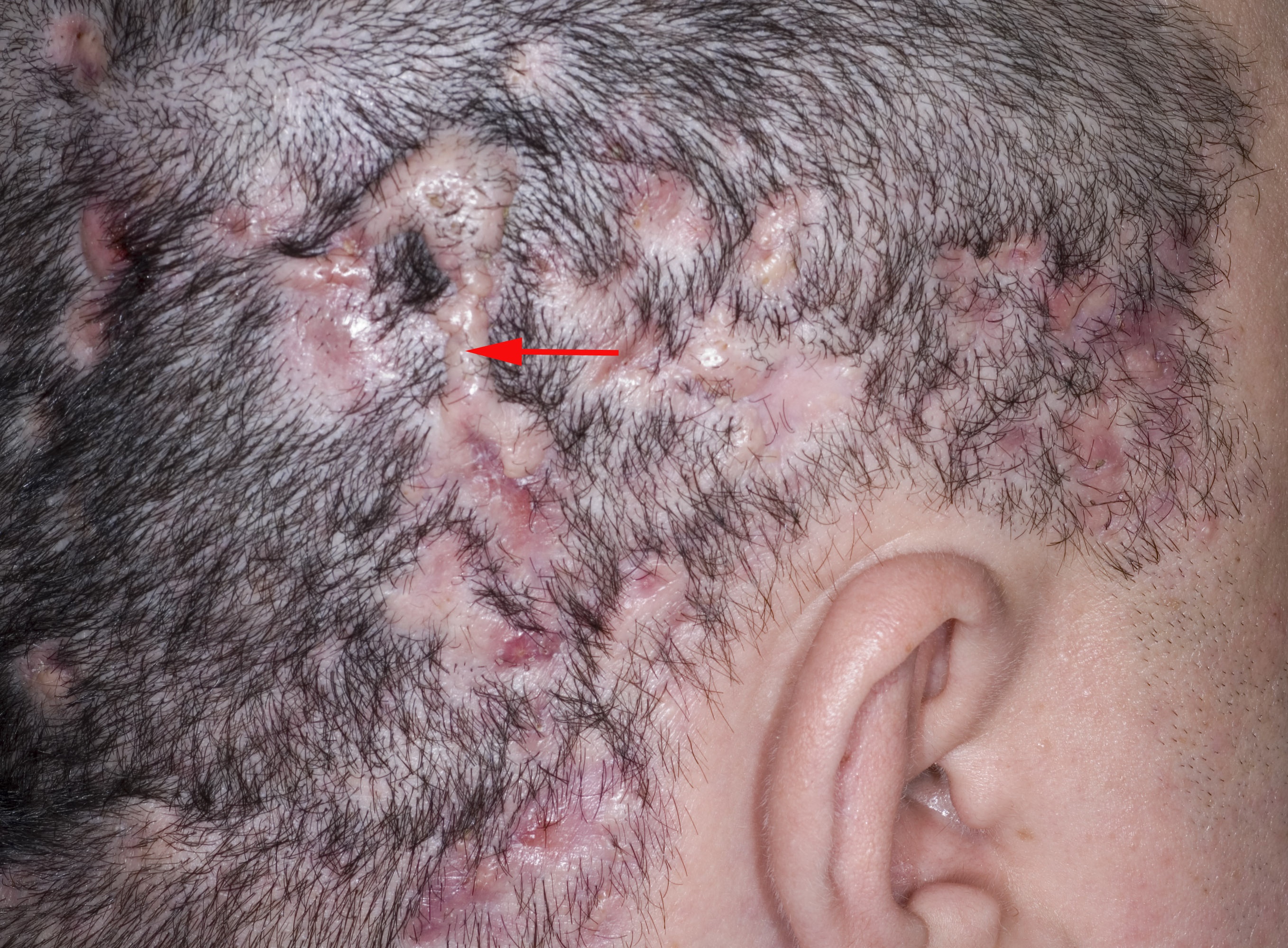Hair loss, lesions
For 3 years, this 35-year-old man had hair loss and painful lesions on his scalp. He’d been diagnosed with hidradenitis in the past, but had never sought care for his scalp problem.
What's your diagnosis?
 |
 |
The family physician (FP) had experience with cicatricial alopecias and was able to make the diagnosis of dissecting cellulitis (also known as dissecting folliculitis) on appearance only (FIGURE 1). Dissecting cellulitis of the scalp causes painful purulent nodules and sinus tracks (FIGURE 2) leading to scarring alopecia.
Dissecting cellulitis presents with deep inflammatory nodules, primarily over the occiput, that progress to coalescing regions of boggy scalp. Sinus tracks may form and Staphylococcus aureus is frequently cultured from the inflamed lesions. When dissecting cellulitis occurs with acne conglobata and hidradenitis suppurativa, the syndrome is referred to as the follicular occlusion triad. (In this case, the patient had 2 of the 3 elements of the triad; he did not have acne conglobata.)
Dissecting cellulitis may have a mixed neutrophilic and lymphocytic infiltrate on biopsy. The FP opened one purulent scalp lesion and sent a culture. The culture grew out S aureus that was not methicillin-resistant and was sensitive to doxycycline. The physician prescribed doxycycline 100 mg BID. (One option after maximizing any benefits from antibiotics would involve prescribing oral isotretinoin.)
Photos and text for Photo Rounds Friday courtesy of Richard P. Usatine, MD. This case was adapted from: Usatine R. Scarring alopecia. In: Usatine R, Smith M, Mayeaux EJ, et al, eds. The Color Atlas of Family Medicine. New York, NY: McGraw-Hill; 2009:815-818.
To learn more about The Color Atlas of Family Medicine, see:
• https://www.amazon.com/Color-Atlas-Family-Medicine/dp/0071474641
The Color Atlas of Family Medicine is also available as an app for mobile devices. See




